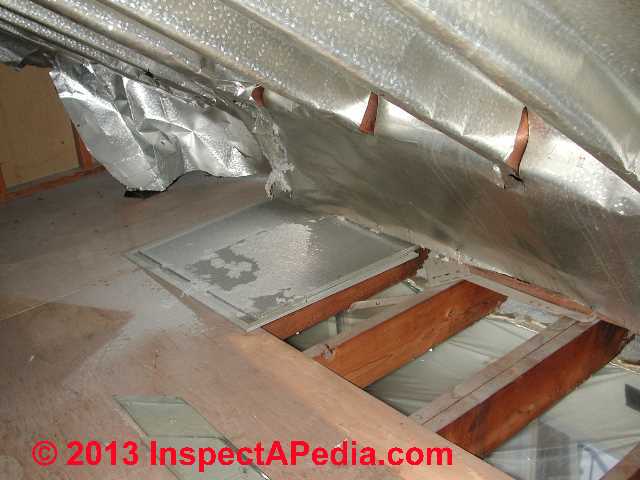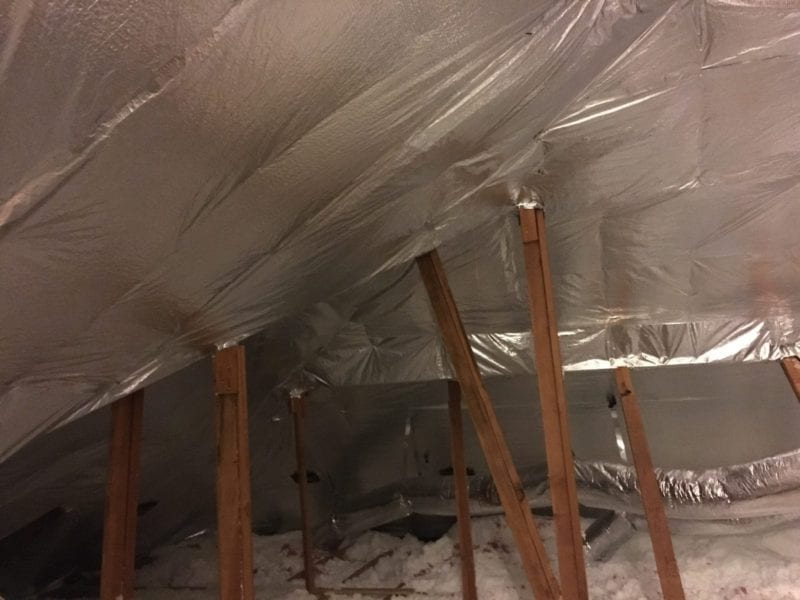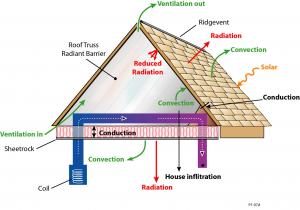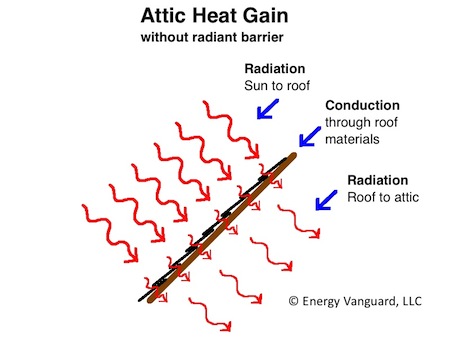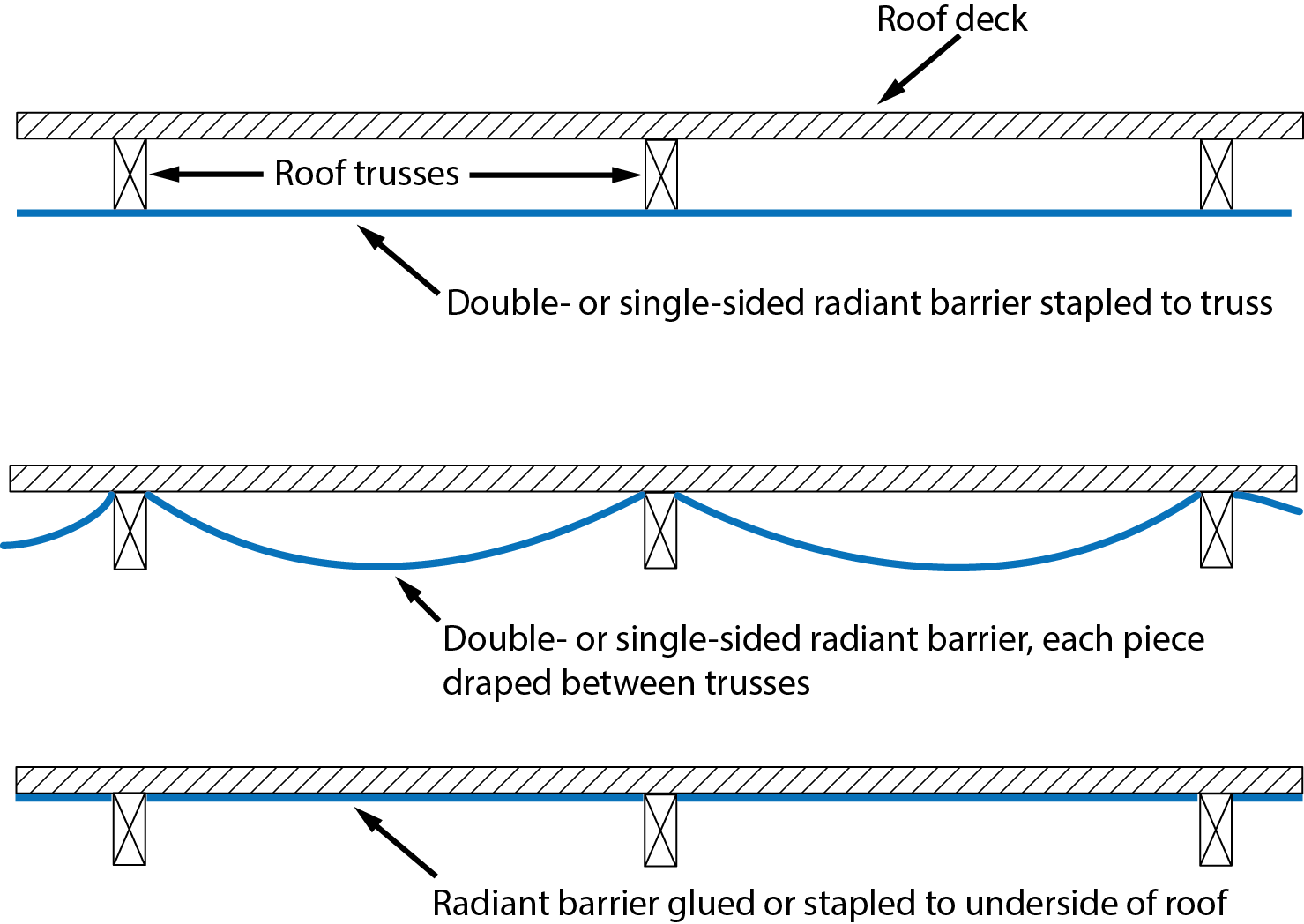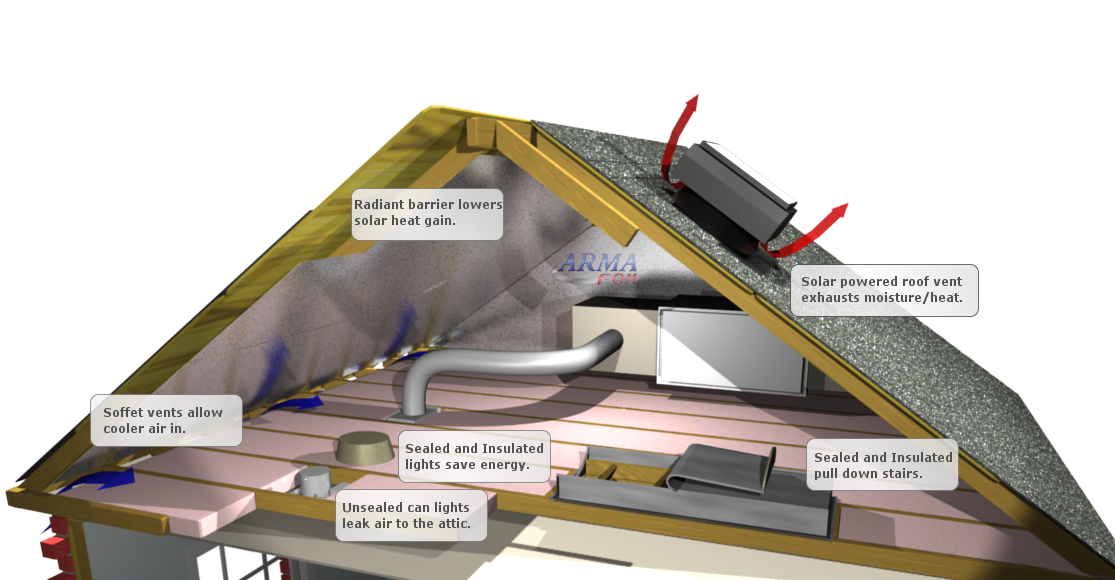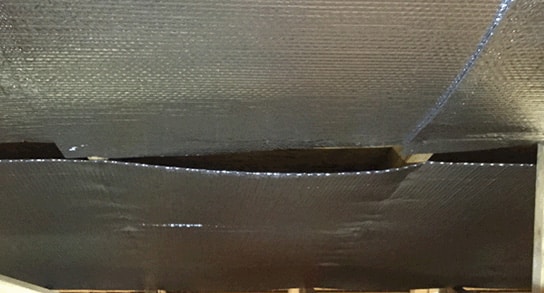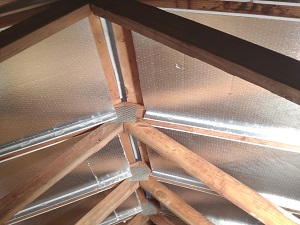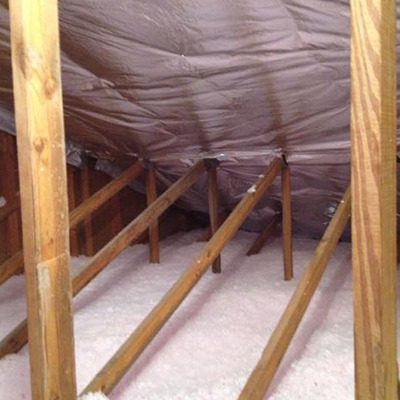Radiant barriers are utilized to reduce summer heat gain in attics and help to improve the efficiency of green building envelopes.
Radiant barrier with attic fan heat damage.
Super r radiant barrier.
R value of 14 5 fireproof attic stairway insulator model msgasc.
Whistler attic stairs insulation cover 25 in.
A radiant barrier installed in the attic will help keep the radiant heat emitting from the home from hitting the roof.
This thin reflective material is designed to bounce the sun s heat away from your home instead of allowing your attic to absorb the heat and pass it into your home.
A radiant barrier works best when it is perpendicular to the radiant energy striking it.
A radiant barrier can lower heat transfer from attics to the building below keep the attic space cooler and lower cooling costs by up to 17 in warmer climates.
The hot surface on the underside of your roof in your attic radiates heat onto cooler surfaces in your attic such as your air ducts and the floor of the attic.
The energy travels through your roof assembly by conduction.
A radiant barrier can help by reducing the amount of that heat that radiates downward.
A radiant barrier in the attic helps prevent the electromagnetic transfer of heat such as from the photons in sunlight.
Free delivery with 45 order.
Radiant barrier is a home insulation type that is focused on reducing summer heat gain.
Unlike traditional thick layers of insulation radiant barrier is a thin reflective material.
An attic radiant barrier is made of a highly reflective material mounted on one or both sides of a substrate.
Set your store to see.
We take a look at how radiant barriers work the different types of radiant barriers and some of the.
Also the greater the temperature difference between the sides of the radiant barrier material the greater the benefits a radiant barrier.
Install radiant barriers in your attic to improve heating and cooling efficiency.
Super r radiant barrier is especially effective in an attic application because that is where most of the heat enters or leaves a home or structure.
Powered attic ventilators are the worst way to try to keep your attic cool.
The roof absorbs radiant heat from the sun but air flow either wind or attic ventilation has a cooling effect on the roof and helps bring down the overall temperature.
In theory if your roof never got any hotter than the outside air temperature then a radiant barrier would not be needed.
A radiant barrier reduces the radiant heat transfer from the underside of the roof to the other surfaces in the attic.
The cooler a roof is the less radiant heat it emits.
The result is a cooler roof deck which will reduce ice damming.
Many customers have seen a significant reduction in ice damming after installing atticfoil radiant barrier.
Radiant barriers are fine but why not just stop the heat on the side of the roof where it first enters.
Heat always gravitates to cold so if you want to keep your home cool in the summer the heat is trying to get in.
Battic door energy conservation products 3 ft.
